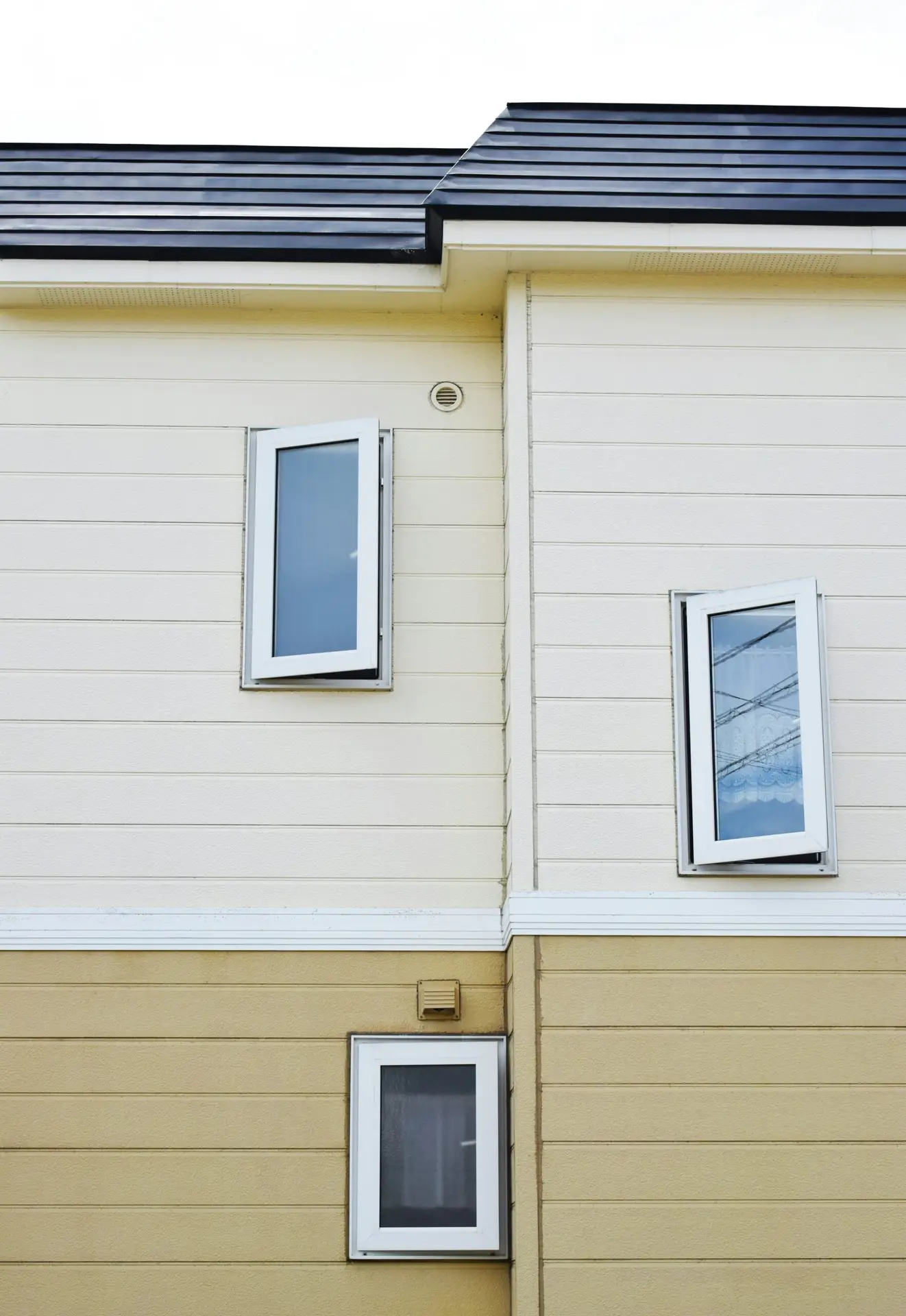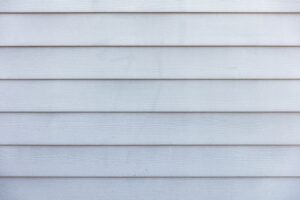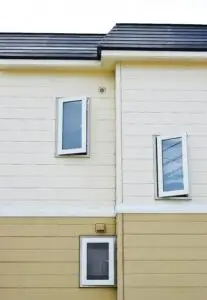Siding installation transforms a home’s exterior through careful planning, precise measurements, and skilled craftsmanship. This complex project involves more than just attaching panels; it includes selecting the right materials and ensuring proper insulation, significantly impacting a home’s aesthetics and energy efficiency. In this article, we’ll explore the step-by-step siding installation process, from initial preparations to final touches, providing valuable insights to help you make informed decisions for your home’s exterior upgrade.
Key Takeaways
- Proper preparation, including addressing existing damage, is crucial for a successful siding installation.
- Hiring an experienced contractor ensures quality workmanship and adherence to building codes, leading to a durable and attractive exterior.
- Selecting the right siding material is important for both aesthetics and long-term durability, considering factors such as climate and maintenance needs.
- Regular maintenance, including cleaning, inspecting, and sealing, is essential for prolonging the life of your siding and maintaining your home’s curb appeal.
- Understanding the step-by-step siding installation process helps homeowners make informed decisions and ensures a smooth and efficient project.
Preparing for Siding Installation

Proper preparation is essential for a successful siding installation, which involves careful planning, thorough assessment, and organizing all necessary resources. The process begins with a professional inspection of your home’s exterior to identify any existing damage, such as rot, mold, or structural issues, particularly around windows, doors, and the foundation. Addressing these problems ensures a solid surface for the new siding. Contractors will handle the acquisition of necessary permits and materials, ensuring that everything from siding panels to sealant and tools is ready to streamline the installation process and prevent delays. If your home has existing siding, the contractor will carefully remove it, inspect the underlying structure, and prepare the surface for the new siding. These preparatory steps, managed by professionals, ensure a smooth and successful siding installation.
Assessing Your Home’s Exterior
Before installing new siding, it’s crucial to assess your home’s exterior for any existing damage or issues that need to be addressed. Look for signs of rot, mold, or structural damage, particularly around windows, doors, and the foundation. Repairing these issues beforehand ensures that the new siding will be installed on a solid, stable surface. A thorough assessment helps identify any potential problems that could affect the installation process or the longevity of your siding.
Gathering Necessary Permits and Materials
Before starting the siding installation, it’s important to ensure that your contractor has obtained all the necessary permits and gathered the required materials. The contractor will check local building codes to understand what permits are needed for siding installation. Having all materials, including siding panels, nails, sealant, and tools, prepared in advance will streamline the process and prevent delays. With everything ready beforehand, the installation can proceed smoothly and efficiently without unexpected interruptions.
Removing Old Siding
If your home has existing siding, it must be carefully removed before the new siding can be installed. This step involves stripping away the old material, disposing of it properly, and preparing the surface for the new siding. Removing old siding allows for a thorough inspection of the underlying structure and ensures a clean slate for the new installation. Proper removal and disposal are important for avoiding future issues and ensuring the new siding adheres correctly.
Choosing the Right Siding Material

Selecting the right siding material is crucial as it impacts your home’s appearance, durability, and maintenance needs. Various options like vinyl, wood, fiber cement, and metal each offer unique benefits. Vinyl is affordable and low-maintenance, wood provides a classic look but needs more upkeep, fiber cement is durable and pest-resistant, and metal is known for its strength. Consider your local climate; fiber cement and metal are ideal for extreme weather, while wood suits milder areas. Also, evaluate the environmental impact and long-term sustainability of your choice. The material should enhance your home’s curb appeal and align with its architectural style, significantly improving its overall look and value.
Understanding Different Siding Materials
There are various siding materials available, each with its own benefits and drawbacks. Common options include vinyl, wood, fiber cement, and metal. Vinyl siding is popular for its affordability and low maintenance, while wood offers a classic, natural look but requires more upkeep. Fiber cement is durable and resistant to pests and rot, and metal siding is known for its strength and longevity. Understanding the characteristics of each material helps homeowners make an informed decision based on their needs and preferences.
Considering Climate and Environmental Factors
When choosing siding, consider the climate and environmental conditions of your area. For instance, fiber cement and metal are excellent choices for regions with extreme weather conditions due to their durability. In contrast, wood siding may be more suitable for areas with milder climates. Choosing the right material ensures your siding performs well and lasts longer in your specific environment. Additionally, consider the environmental impact of your chosen material and its long-term sustainability.
Evaluating Aesthetic Preferences
Your home’s exterior appearance is significantly influenced by the siding material you choose. Consider your aesthetic preferences and the architectural style of your home when selecting siding. Each material comes in various colors and textures, allowing you to find an option that enhances your home’s curb appeal and complements its design. Selecting a siding material that aligns with your aesthetic vision can greatly improve the overall look and value of your home.
The Siding Installation Process

Understanding the steps involved in siding installation helps homeowners know what to expect and ensures a smooth process. The installation begins with accurately measuring and cutting siding panels to fit each section of the exterior, preventing gaps and overlaps for a seamless appearance and optimal protection. Next, starter strips and corner posts are installed at the bottom edge and corners of the house, providing a secure base and alignment for the panels. Siding panels are then attached using nails or screws, starting from the bottom and overlapping each subsequent panel to create a weather-tight seal. Proper attachment is crucial to prevent loosening and protect against water and wind damage. By understanding these steps, homeowners can appreciate the complexity and importance of the siding installation process.
Measuring and Cutting Siding Panels
Accurate measurement and cutting of siding panels are crucial for a precise fit. This step involves measuring each section of the exterior and cutting the siding panels to the correct size. Proper measurement and cutting prevent gaps and overlaps, ensuring a seamless appearance and optimal protection for your home. Taking the time to measure and cut accurately reduces waste and ensures that the siding fits perfectly, which is key to a professional-looking finish.
Installing Starter Strips and Corner Posts
The installation process begins with placing starter strips and corner posts, which serve as the foundation for the siding panels. Starter strips are installed along the bottom edge of the exterior, and corner posts are placed at the corners of the house. These components provide a secure base and guide for the siding panels, ensuring they are aligned correctly. Proper installation of these foundational elements is essential for the stability and appearance of the finished siding.
Attaching Siding Panels
Siding panels are attached to the house using nails or screws, starting from the bottom and working upward. Each panel is secured to the starter strip and overlaps the one below it, creating a weather-tight seal. Proper attachment is essential to prevent panels from loosening and to protect the home from water infiltration and wind damage. Ensuring that each panel is securely attached and correctly overlapped helps maintain the integrity and durability of the siding.
Post-Installation Maintenance and Care

Proper maintenance and care after installation are vital for prolonging the life of your siding and keeping it looking its best. Regular upkeep enhances your home’s aesthetic appeal and ensures the siding effectively protects against the elements. Wash your siding at least once a year with mild detergent and water to remove dirt and grime. Inspect it during cleaning for damage such as cracks, warping, or loose panels, and address these issues promptly. For wood siding, periodic repainting or restaining is necessary to protect it from the elements and maintain its appearance. Ensure the surface is clean and dry before applying new paint or stain. Regularly inspect and maintain caulking around windows, doors, and other openings to prevent water infiltration, applying fresh caulk as needed to seal gaps or cracks. Proper sealing and caulking improve energy efficiency and protect your home from moisture damage. By following these maintenance tips, homeowners can ensure their siding remains in excellent condition for years.
Regular Cleaning and Inspection
Regular cleaning helps maintain the appearance and durability of your siding. Wash your siding at least once a year with mild detergent and water to remove dirt and grime. Inspect your siding during cleaning to check for any damage, such as cracks, warping, or loose panels, and address these issues promptly to prevent further damage. Regular inspections and cleanings help keep your siding in top condition and can extend its lifespan significantly.
Repainting or Staining Wood Siding
If you have wood siding, repainting or restaining it periodically is necessary to protect it from the elements and maintain its appearance. Ensure the surface is clean and dry before applying new paint or stain. Properly maintained wood siding can last for many years and continue to enhance your home’s curb appeal. Regular maintenance of the paint or stain helps prevent moisture penetration and UV damage, keeping the wood in good condition.
Sealing and Caulking
Regularly inspect and maintain the caulking around windows, doors, and other openings to prevent water infiltration. Apply fresh caulk as needed to seal any gaps or cracks. Proper sealing and caulking help protect your home from moisture damage and improve its energy efficiency. Maintaining a tight seal around openings ensures that your siding performs its best in protecting your home from the elements.
Conclusion
Understanding the siding installation process is crucial for homeowners to ensure a successful and durable exterior upgrade. Proper preparation, including addressing existing damage and selecting appropriate materials, forms the foundation of a quality siding project. By comprehending the process and potential challenges, homeowners can make informed decisions, resulting in a beautiful and long-lasting home exterior that enhances both curb appeal and property value.










